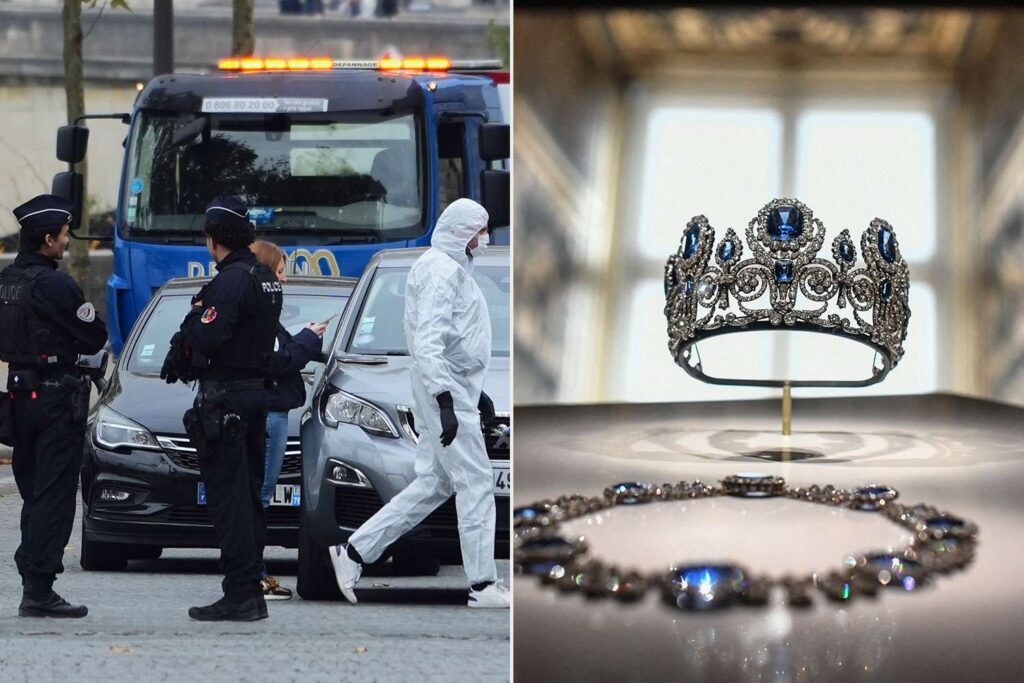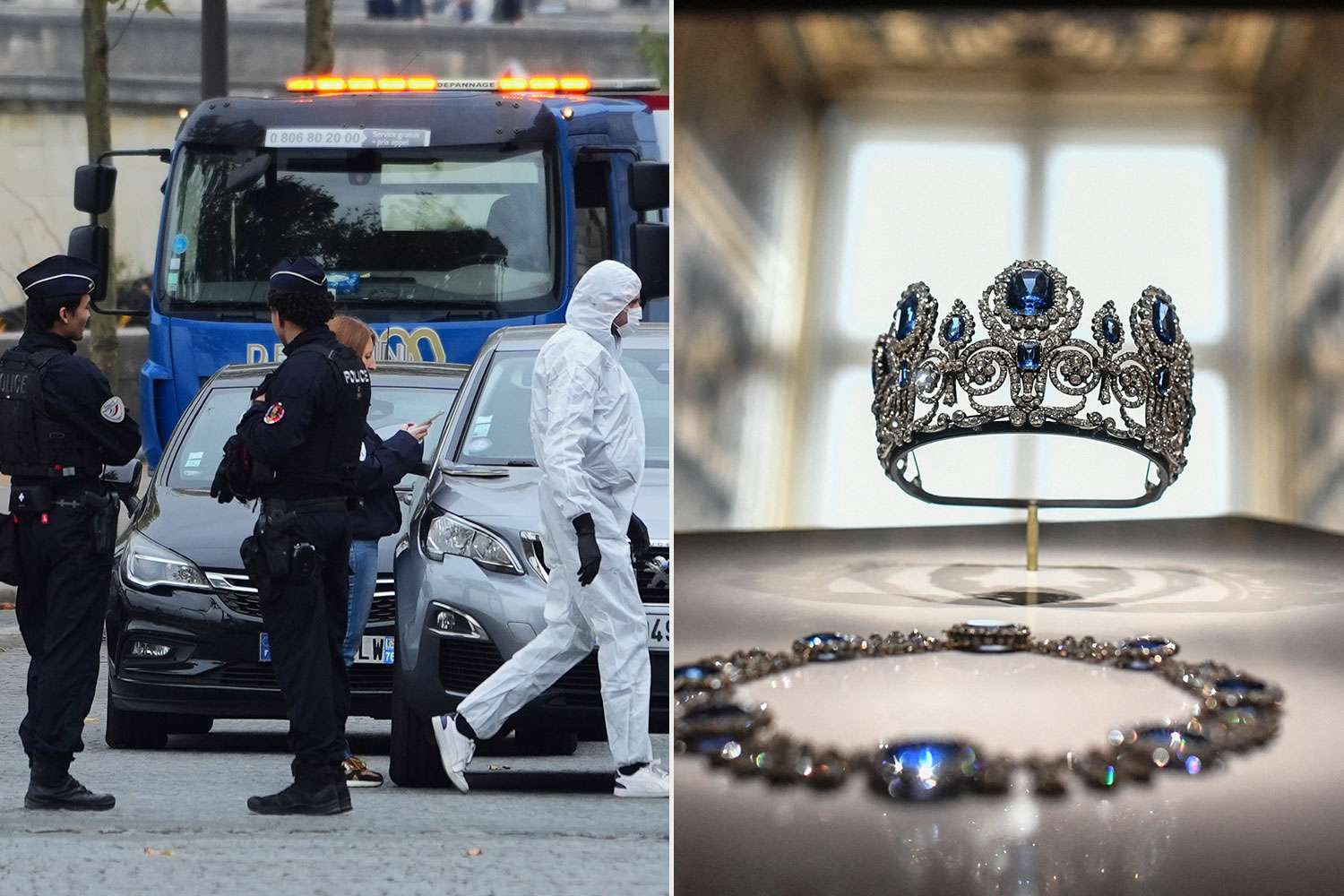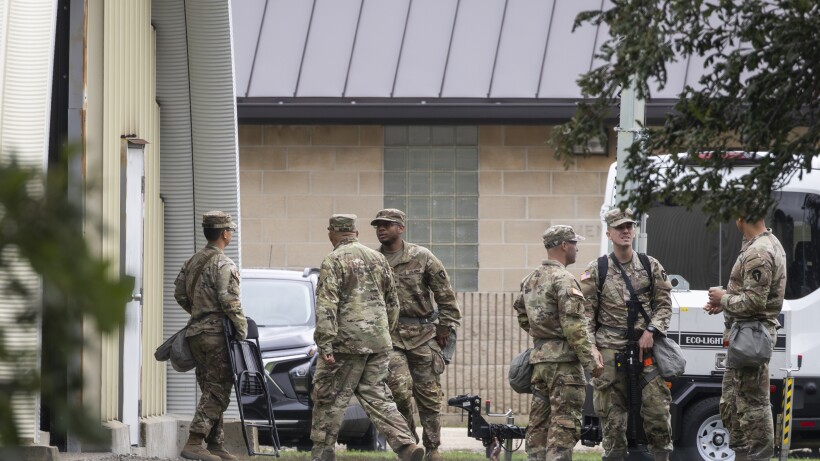The Louvre Museum robbery shocked France and alarmed cultural officials across Europe. Thieves broke into the museum during opening hours, stole priceless jewels, and escaped before guards could stop them. The incident raised urgent questions about security, response protocols, and the protection of national heritage.
A Break-In at the Heart of French Culture
The Louvre is the world’s most visited museum and a symbol of French identity. It houses royal jewels, imperial regalia, and treasures tied to the nation’s past. The stolen pieces were displayed inside the Galerie d’Apollon, an ornate hall known for gold, gemstones, and historic crowns. The jewels hold deep cultural weight, and their disappearance hit a national nerve.
Officials said the thieves entered shortly after the museum opened. They moved fast, targeted specific objects, and left within minutes. The speed of the operation stunned museum staff and investigators. Visitors were escorted away as alarms sounded and the gallery shut down for inspection.
The break-in triggered a full security review. Early signs pointed to a breach in an area affected by renovation work. The thieves likely studied the layout and struck a weak point.

Rapid Heist and Immediate Investigation
Authorities described a coordinated plan. The thieves forced entry, smashed display cases, grabbed select jewels, and fled through an exit route near an outer wall. Security teams rushed in, but the suspects were already gone.
No visitors were hurt. Staff members followed evacuation procedures and sealed surrounding rooms. Investigators opened a criminal probe and began reviewing footage and movement logs. Police units also searched nearby streets and river walkways for discarded tools or clothing.
The investigation now focuses on three questions: how the thieves entered, why guards responded too slowly, and whether inside knowledge played a role. Officials are also checking recent contractor access and badge records connected to renovation crews.
Security Experts Warn of Larger Risks
Security analysts say the Louvre Museum robbery exposed a clear pattern. Organized groups target jewels because stones can be altered and sold with little trace. Paintings are harder to move and easier to identify, but gemstones can vanish through private markets.
Experts pointed to three major weaknesses:
- Slow interception inside large galleries
- Limited exterior surveillance near work zones
- Outdated alarm response coordination
They argue that major museums face modern threats that require faster systems, stronger glass, and tighter control around renovation projects. They also recommend shorter response times between an alarm and the arrival of armed personnel.
Government Pressure and Public Reaction
French officials condemned the robbery and called for stronger cultural security nationwide. The Ministry of Culture ordered an internal audit. Lawmakers demanded answers about staffing levels, equipment upgrades, and oversight failures.
The Louvre introduced temporary measures within hours. Guards increased patrol rotations. Access routes narrowed. Visitor flows changed near sensitive rooms. Museum leadership promised a long-term plan to prevent another breach.
Public reaction has been intense. Many citizens expressed anger that such an emblem of France could be infiltrated so easily. The jewels belong not only to a building, they argued, but to the national story. The robbery became a point of debate in media, schools, and political circles.
Long-Term Implications for Cultural Security
The Louvre Museum robbery has broader consequences. Other museums now face pressure to review their own systems. Cultural sites must balance access and protection. Wide-open galleries attract visitors, but open space also creates opportunity for crime.
Security specialists expect rapid changes. Museums will likely adopt stronger display cases, more motion tracking, and better perimeter detection. Renovation areas may receive tighter control and separate guard teams. Training drills could also increase, especially during peak tourism seasons.
To many observers, the episode marks a turning point. High-profile institutions can no longer rely on reputation, architecture, or tradition. Modern thieves plan with precision. Cultural security must evolve faster.
Conclusion: A Wake-Up Call for France
The Louvre Museum robbery damaged more than display cases. It shook confidence in the nation’s ability to protect its heritage. The stolen jewels carried historic meaning that money cannot replace. Their loss left a symbolic wound.
The investigation continues, and police are still searching for the stolen artifacts. The Louvre must now repair both its security and its reputation. Museums across Europe are watching closely. The incident stands as a sharp warning: national treasures require constant vigilance.








